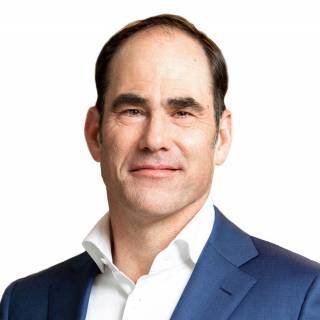It’s a mad world
I recently took out an old classic from my record collection: “Mad World” by Tears for Fears. Is there a better description of the current state of the global economy?
A breathtaking pace
The world is still trying to keep up with the new old US president, Donald Trump. Regardless of where you stand on the substance of the announced policy measures, the pace at which the US administration has come off the starting blocks is breathtaking. Interestingly, not every initiative or announcement has made it into actual policy measures (yet), and only time will tell whether sprinting into a marathon is a winning strategy. However, the series of potential trade measures, from outright tariffs to reciprocal tariffs or even targeting the VAT of trading partners, has kept politicians and analysts around the world very busy.
The actions of the Department of Government Efficiency are impressive for those who always wanted transparent disruption and scary for those with an interest in 20th-century history like me. For everyone interested in what is still to come, I can only recommend reading the Project2025 plans, a source of valuable information many Europeans must have overlooked. Otherwise, they wouldn’t be so surprised by everything that is currently happening.
Europe appears paralysed by fear
Interestingly, the domestic economic policy agenda of tax cuts and increased energy production has not taken off yet. Instead, consumer confidence has started to weaken, while big corporates recently announced significant investments in the US, investments Europe would also have liked to receive. However, instead of strengthening its domestic economy, Europe still looks petrified, terrified by the looming tariff threat and even more scared by the quickly changing geopolitical reality.
With the US and Russia negotiating a possible end to the war in Ukraine, with barely any involvement of Ukraine or Europe, and a looming withdrawal of US military, Europe urgently needs to step up its game. That's on security, defence, and strategic autonomy. The risk I see is that Europe falls into the same trap as it did after the euro crisis: producing many reports with excellent analysis and policy recommendations but being too easily satisfied with baby step progress and accentuating problems rather than thinking boldly.
Here's a little quiz: How many European presidents’ reports on strengthening the monetary union have been released since 2014?
Answer: Way too many.
After the euro crisis, it was Jean-Claude Juncker who said that all European government leaders knew what to do (i.e., eventually, nothing else than a fully-fledged fiscal and political union as well as a capital markets union). But they didn't know how to get re-elected if they did what had to be done. To paraphrase Mr Juncker, right now, most European government leaders also know what to do (i.e., increasing defence spending substantially), but they don’t know how to pay for it.
If Europe really wants to defend itself, it needs to increase military spending fast, from the current 2% of GDP to around 4% of GDP. The problem is that not every country has a domestic defence industry that would benefit from higher spending. This is why a European approach would make more sense. However, Europe is likely to follow a national approach first, allowing some flexibility in the fiscal rules but definitely putting more pressure on debt sustainability.
It makes me want to shout
How much European policy discussions are dominated by public finance concerns can hardly be better seen than in Germany, where initial hopes for imminent fiscal stimulus have already given way to political horse-trading only a few days after the elections. A special fund for more defence spending seems likely. A special fund for infrastructure investments still seems a distant dream.
And there's the rub. After five years of economic stagnation, an investment gap of some 600 billion euros, and a long list of structural challenges, how many wake-up calls does Europe need? In "Mad World," Tears for Fears sings about people running in circles. Did they have Europe in mind? Sometimes, I wish for a bit more "promises made, promises kept" in Europe. Or to say it again with Tears for Fears: “Shout, shout, let it all out, these are the things I can do without, come on, I’m talking to you, come on.”
Our main calls
Trade tensions are set to increase with upcoming US tariffs on EU and China. We see only little room or willingness for significant deals.
Geopolitical uncertainty has increased, despite or maybe even due to the US-Russia talks on Ukraine. We see increased defence spending in Europe over the coming years but continued uncertainty and disagreement on how to pay for additional spending.
Near-term strength in the US economy is likely to persist, but higher Treasury yields and the consumer being hit from tariffs is likely to usher in cooler economic growth. We expect the Federal Reserve to cut rates twice this year.
In the eurozone, signs of a bottoming out have increased but with looming tariffs and continued geopolitical uncertainty, we stick to our call of sluggish growth in the first half of the year. Despite inflation remaining too high, we expect the European Central Bank to continue cutting rates to at least 2% by the summer.
In Germany, we expect complicated and cumbersome coalition talks. Eventually, the next government will deliver some tax cuts and investments as well as higher defence spending but outright changes to the debt brake are unlikely. We see the economy regaining momentum in second half of the year but competitiveness concerns will remain.
We expect China to stick with its “around 5%” growth target again in 2025, a show of confidence that external headwinds might not derail growth. We continue seeing stronger Chinese retaliation to US tariffs than many expect.
We've taken a cold look at our 5.5% call for the US 10yr and have on balance decided to trim it to 5%. A combination of Doge, Treasury Secretary Scott Bessent and talk of SLR adjustment(s) have managed to tame the prior de-rating of Treasuries versus the risk free rate.
The dollar has come under some pressure on the back of the rerating of the US growth outlook and expectations that the Russia-Ukraine conflict is nearing an end. However, we expect US tariffs to regain centrality and drive the dollar sustainably higher.
This publication has been prepared by ING solely for information purposes irrespective of a particular user's means, financial situation or investment objectives. The information does not constitute investment recommendation, and nor is it investment, legal or tax advice or an offer or solicitation to purchase or sell any financial instrument. Read more
Download
Download article
27 February 2025
ING Monthly: It’s a mad world This bundle contains 16 Articles